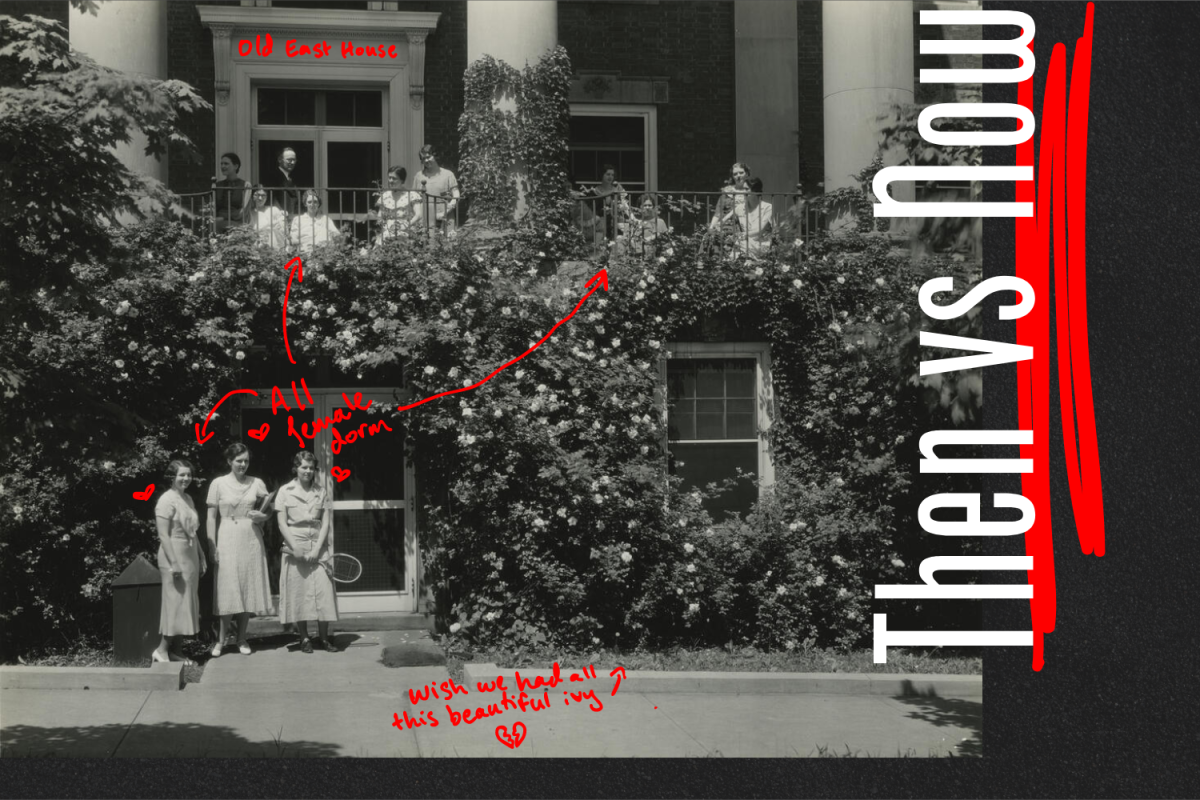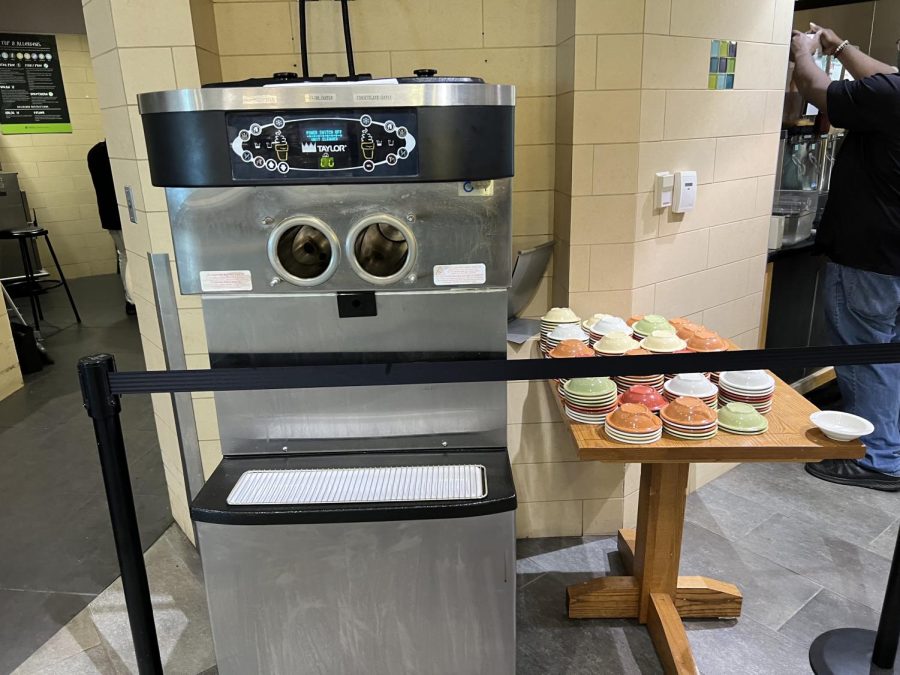Editor’s Note: This piece is a continuation of the Sep. 5 article titled “WHITE: Vanderbilt Campus Dining made me cry.”
“See you later,” I waved to a friend as I turned toward Hank after my walk from Main Campus. “I’m gonna see if the food truck has anything good,” I added casually. “If not I’ll just have a granola bar for dinner.”
Good thing Clif Bars are high in calories.
Being an optimistic food-lover, the ‘dining crisis’ initially didn’t phase me. Long lines at Rand? Go to Suzie’s. Bad Commons food? Grab a 2301 bowl. I’ve never been worried about campus food; I run a food Instagram to show off some of my dining hall food, and initially thought Alexa White was exaggerating when she wrote about crying in Rand. But, with the onslaught of midterms, finals in the near future and homesickness, Alexa, I know how you feel.
With the shortage of viable food options near the freshmen dorms, I might just be on the verge of crying on the Commons.
Clif Bar for dinner?
Commons is an island—over a half-mile walk (0.6, to be exact, from the Commons Center to Rand) from the rest of campus, isolated from 90% of dining options and accommodations for those with dietary restrictions on campus.
Yes, you heard that right. 90% of dining halls, cafes and Munchie Marts, and 100% of dining halls with allergen-free kitchens are located on Main Campus. This leaves just 10% of dining options on the first-year side of campus for over a quarter of the undergraduate student body.
Main Campus not only is home to some of the best tasting and healthiest dining options on campus, but is the target of the majority of Campus Dining’s efforts toward improvement. At Kissam you can find customizable bowls with beef bulgogi and sweet potato, 2301 is home to smoothies and gluten-free bowls and the Residential Colleges feature weekly “Pop-ups” of local American and Indian restaurants. For first-years already struggling to adjust to college life, these innovations are rendered irrelevant by their distance and leave students with dietary restrictions in a frustrating bind when it comes to satisfying their hunger.
It’s sad to see that many of these dining problems persist even after articles like Alexa’s from the beginning of the semester.
Last Sunday when my night ended with a granola bar, it was a 20-minute line and a friend in a rush that spoiled my plans for a warm 2301 bowl. About half an hour later, I found myself on Commons with an empty stomach. So, is Commons really that bad?
What’s wrong with the Commons Dining Hall?
I ruminated on my dinner options as I walked across the driveway in front of Gillette House. I could go to the Dining Hall, the Munchie Mart or the food truck of the day.
To begin, these options are painfully insufficient for feeding 1,600 first-years. Just compare them to the offerings at other schools, like Duke’s international food hall at the Brodhead Center or the Wendy’s in the basement of Carolina Union at UNC Chapel Hill (in addition to a bagel shop on the first floor). Although this year’s dining shortages are at least partially driven by post-pandemic labor shortages and delayed produce deliveries, conversations with students from other universities reveal that not every university is struggling like we are. Although almost all campuses have seen labor shortages, on many it hasn’t even become a topic of conversation among the student body.
Vanderbilt Campus Dining’s struggles today are a result of their failures to invest in versatile, long-hour options and student feedback over the past decade.
The Commons Dining Hall features a salad bar, burgers, a warm dish of the day and sometimes pasta or sandwiches, a painfully inadequate selection for feeding 25% of the student body. Beyond Burgers and just 1-2 pans of buffet-style food are offered for vegetarian students, and “alternative options” for gluten-free students include a small fridge with some muffins, gluten-free rolls and peanut butter.
“As the only vegetarian in my family I’ve always had to fend for myself,” said Kareena Gor, a first-year. “But because Commons lumps their vegetarian and vegan options together every night, and has so few options, I can’t get the protein I need. The distance of vegetarian dining options like Grins and 2301 make being a vegetarian so unsustainable that I’ve even considered eating meat.”
In addition to vegetarian and vegan students, Commons poses additional hurdles for students with allergies.
“Nothing is explicitly labeled as gluten-free in the Commons Dining Hall,” said Maria Abello, a gluten-free first-year. “I really struggled my first few weeks because I didn’t know what salad dressings and other dishes I could eat. I think I started feeling sick by October because of cross-contamination in the dining hall.”
You cannot reliably toast bread, find pizza or pasta or grab a chicken breast with vegetables in Commons because of the dearth and inconsistency of options. Coming to college post-pandemic, most first-years arrived in August lacking knowledge about campus. We knew we would live on Commons, but didn’t realize how isolated it would be, and how little our dining options would be prioritized. There’s not even a place to pick up a slice of bread, nevertheless toast it.
“I eventually got a list of what I could eat from our school dietician,” Maria said. “But no one ever told me about this option, and I still have to walk around the dining hall on my phone to make sure I don’t eat any gluten.”
Luckily, I arrived at Commons that Sunday night before 7:30 p.m., when the dining hall closes daily, leaving busy students to munch on nothing but frozen meals from the Munchie Mart. The situation is even worse on the weekends, when dining halls on Commons and Main Campus don’t fully open until 10:00 a.m., meaning that students have to go off-campus or spend a hefty sum on GrubHub if they want to eat the most important meal of the day.
I crossed eating at the dining hall off my list.
Daily food truck ideas have unfortunately also fallen short of the needs of students who are struggling the most. The menu of the local food truck that Sunday evening provided an even narrower variety of healthy options than the dining hall: fried shrimp or fried chicken. The fried food offered by the majority of southern-inspired food trucks on campus provides no relief for dietarily-restricted students or those who just don’t like fried food.
Serving Chicken & Waffles outside an insufficient dining hall is simply not a solution.
On that Sunday night, there was no place for me to get a wrap, some pasta or even a PB&J. By failing to put additional options in the Commons Center or consistently diversify dining stations—through consistent pasta and international stations or a restaurant open until 11:00 pm, the administration continues to fail students. Now, Campus Dining and the administration need to fortify campus dining against global supply disruptions and invest in robust food sources for the student body.
That night, the chocolate chip Clif Bar waiting on my desk won out.
So, how can Campus Dining do better?
Campus Dining and the University have seemingly given their all to enhancing the dining situation since the chorus of discontent started in September. However, a lack of student involvement in the process has meant that many dining “improvements” have missed the mark entirely.
Consider the Taste of Nashville “Pop-ups” at Zeppos and Kissam, where local restaurants like Bombay Palace and Urban Cookery serve their food on campus one or two nights a week. Such reforms leave first-years out of the loop entirely, assuming we’ll either walk 0.6 miles in the dark or take a cross-campus VandyVan adventure the night before a Calc Test.
While DIY sandwich and smoothie stations added to the Commons Dining hall line-up have had some success, they remain unavailable on the weekends and fail to remedy the extreme shortage of dining options in the Commons Center. This means that students may be able to get a delicious sandwich of their choice on Thursday, but end up in a bind on the weekend when their meal swipe can only earn them a sad salad or a brisket dinner. Inconsistency forces students to dump their money into eating out to get what they want—in addition to the $3,188 first-year meal plan.
“As someone very involved on campus, the hours at Commons are the biggest problem for me,” said first-year Soumia Vellanki. “When I get back to Commons at 7:30 p.m., my only option for dinner is microwaved mac and cheese from the Munchie Mart. It’s really degrading.” For first-years like Soumia, dining options have complicated integration to campus in ways they shouldn’t have to.
When asked about their concerns, students bring up everything from undercooked rice to the need for more international options. Now we just need to leverage these concerns.
“We want critical and detailed feedback from students,” Gayle Hanson, Vanderbilt’s Assistant Director of Campus Dining, said in an interview. Hanson shared with me how students can give their feedback to Commons by texting “VUcommons,” to 55744. Any message will receive a response from the dining hall’s general manager. The Student Dining Consultant role also exists for students to assist in improving offerings and service. While these options are great, most students don’t know they exist. Campus Dining needs to not only ask for feedback but directly seek it through actionable and regular surveys of the student body.
So, will Campus Dining Ever Get Better?
From what I’ve seen, I think it already has—just consider earlier in the semester when 2301 opened for dinner in response to a chorus of concern over dinner options.
What we need now is a concerted push toward the reforms needed to fully serve first-years. As they get through their first semester on campus, dining shouldn’t have to be an additional struggle.
This may look like reforming the stations at Commons to provide access to bread and other make-it-yourself ingredients, offering several warm dinner options every night or ensuring the Commons Munchie Mart’s matches the most well-liked Munchies on Campus in the freshness of their options and variety of wraps and sandwiches. The most important shift is understanding that first-years are isolated on Commons, and in turn providing enough food and variety to make their living conditions sustainable. With collaboration, I see Commons Dining Hall growing to provide at least 25% of the options upperclassmen find in their plentiful dining halls, along with allergy-friendly, healthy cuisine informed by the student body.
Yes, Commons Dining has brought me to abandon my eternal food optimism. But recognizing that there is a problem will be the first step toward the influx of reform necessary to match our campus’s dining to the optimistic perspective we preach for the Commons experience.















